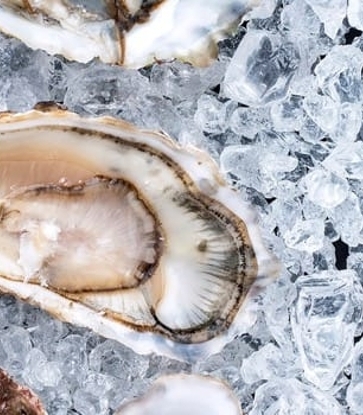Instead of buying herbs by the punnet from the supermarket, growing your own herbs increases freshness and reduces wastage as it cuts down on the amount of packaging material required and fosters a healthy habit of using only what you need, only when you need it.
Moreover, freshly harvested herbs are stronger in taste and fragrance, and you only need to use them in small quantities to add a robust flavour boost to meats, sauces, or dressings, not to mention the aesthetic boost when used as a garnish for dishes and drinks, too.
Whether you're a newbie gardener or seasoned green thumb, a landed property owner with a sprawling patio or HDB dweller with just the right amount of space on your windowsill, get started on your own edible garden at home with our handy guide to 4 essential culinary herbs below:

SPRING ONION
Level of difficulty: Easy
This delicious Allium is any newbie gardener’s dream because of how easy it is to grow them. Not to be confused with the western scallion (which has no bulb at its base), spring onions are fuller in flavour and used ubiquitously in most cuisines found in Asia.
How to grow it
Simply buy a few bulbs of shallots (small red onions) from the grocery store and bury each one in well-draining organic compost mix, leaving its tip exposed.Plant them 1.5 inches apart from each other, ensuring each bulb has good depth and space to grow roots (about 6 inches).
Water daily, ensuring the water drains well in between watering. Keep your pot in a well-ventilated spot preferably by the window that receives some sunlight.
How to use it
Within 3 days, you should see sprouts coming through the tips, and a week after that, your spring onions are mature enough for harvesting. Simply snip off the leafy portion and shred them thinly for garnishing or chop it up as an omelette ingredient.

LEMON BALM
Level of difficulty: Easy
Insomniacs rejoice because lemon balm is the go-to tea ingredient for a relaxing nightcap that promotes relaxation and encourages restful sleep. Most importantly, it is much easier to grow in our tropical climate, as compared to the other popular relaxing herb, Lavender. Watch out, however, as this prolific seed spreader can take over any herb patch at record speed, so do keep them barricaded in their own space.
How to grow it
As with most herbs, lemon balm is best grown from stem cuttings. Select a strong looking stem from a parent plant, and using a pair of sharp scissors, snip off 4.5 inches from the top. Remove about 1.5 inches worth of leaves from the base of the cutting and stick the stem into a pot of well draining moist compost mix.
Water thoroughly twice daily until the stem grows roots (when you pull the stem gently and it tugs back, roots have formed), then reduce to watering once daily. Place pot in semi-shade and keep it well ventilated always.
Lemon balm smells stronger than it tastes, and is a more therapeutic herb than most know it.
How to use it
The lemon balm leaves don’t do well being cooked, so chop them up raw and sprinkle over salads for a refreshing kick or blend them with lemon juice to make a tangy beverage.

INDIAN BORAGE
Level of difficulty: Medium
Also known as Spanish thyme, the Indian borage is a great replacement of thyme and oregano, which are more challenging herbs to grow in our humidity and warm climate. It is a hardy plant that flourishes even in the partial sun, and it can tolerate short bouts of drought.
How to grow it
Select a strong looking stem from a parent plant, and using a pair of sharp scissors, snip off 4 inches from the top. Remove about 1 inch worth of leaves from the base of the cutting and stick the stem into a pot of well draining moist compost mix. When waiting for the cutting to form roots, ensure the soil is dry in between watering because the indian borage is most afraid of root rot. So, if the soil medium is still moist to the touch, avoid watering for that day.
How to use it
Indian borage is a super herb because of its many uses and benefits. Its strong scent keeps insects and pests at bay, so having pots of this herb around the home is great during the warm and rainy seasons when mosquitoes tend to breed.
Chinese grandmothers traditionally make tea by boiling its leaves together with rock sugar to remedy chesty coughs and sore throats. Steep some crushed indian borage leaves in steaming hot water and inhale its vapour to relieve nasal congestion.

ULAM RAJA
Level of difficulty: Advanced
The king’s salad as it is otherwise known, Ulam Raja is a popular herb used in Malay cooking. It smells pungent but tastes like mild mango and has a slimy texture.
How to grow it
Unlike other herbs that grow from stem cuttings, the Ulam Raja grows easiest from seeds. Spread seeds far apart from each other in good fertile soil or medium containing burnt soil and ensure daily watering to keep the medium moist. The ulam raja likes a hot and sunny spot so they are best grown in the ground of a garden. Germination will take place between three to eight days.
Allow the plant to grow to about 15 inches tall before harvesting. Harvest by snipping off 3 inches from the top with a sharp pair of scissors to stimulate and promote the growth of new branches.
How to use it
Eaten raw for its young leaves, the Ulam Raja pairs perfectly with sambal belachan, a fermented prawn chilli paste. It is also added to sweetened green bean soups to enhance its blood-detoxification properties.

















